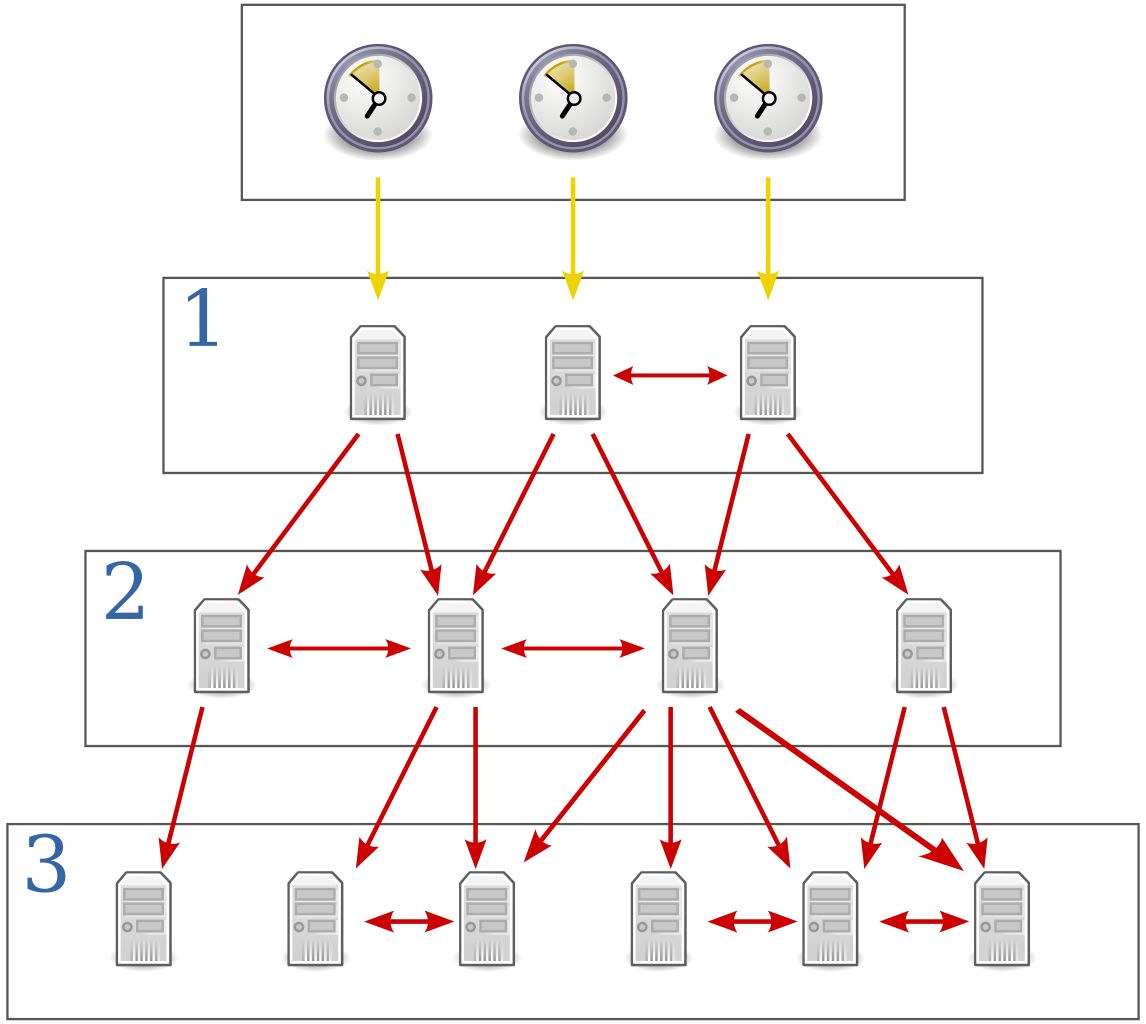Time synchronization is critical in computer networks because planning, managing, debugging, and protecting a network all entail establishing when an event occurred and require precise time. However, maintaining an exact time is challenging because the computer's clock drifts by a few minutes or seconds daily.
As a result, routers, servers, devices, and switches employ Network Time Protocol (NTP) to solve the problem of network time synchronization. But why is NTP important, and how does it work?
What Is Network Time Protocol?
Network Time Protocol is an online protocol that synchronizes computer clock times in a network to within a few milliseconds of UTC, allowing devices connected to a TCP/IP network to work at the same adjusted time. That is inclusive of protocol and client-server programs for computers. It is highly effective in correcting errors in server transmission and is the foundation for time synchronization across networks.
NTP was first developed by Dave Mills in 1985 at the University of Delaware, but today, the protocol is open-source and used worldwide.
How Does Network Time Protocol Work?
NTP follows a three-step process to synchronize time:
- The protocol client requests an exchange with the time server.
- The client calculates its delay/offset and readjusts to match the server’s clock.
- There must be six-time exchanges within 10 minutes to update the clock every 10 minutes (or sometimes hourly) to maintain its time accuracy. The messages transact the updates via the User Datagram Protocol (UDP)—Port 123.
What Are Stratum Levels?
The Coordinated Universal Time (UTC) Source has separation degrees known as strata, which follow a strict hierarchy.
- Stratum 0: This is the ground-zero clock that receives the true UTC from the satellite system designed specifically to transmit this “true time.” For this reason, stratum 0 clocks are the original and reference clocks for all clocks. Examples are the Atomic Clock and GPS Clock.
- Stratum 1: These are computer devices/systems directly linked to Stratum 0 to receive true time.
- Stratum 2: These time servers get their true time from Stratum 1.
- Stratum 3: These computer devices are linked to and get their true time from Stratum 2 servers.
The NTP hierarchy continues down the ranks, and time accuracy is reduced as it progresses down the ranks. There are altogether 16 strata in the NTP hierarchy; strata 16 indicates an unsynchronized device.
It is important to consider Segal’s Law when installing a time server for a network:
A man with a watch knows what time it is. A man with two watches is never sure.
Based on this law, maintaining two NTP servers makes it hard for hackers to decide which one is authentic. Although choosing two stratum 0 servers because of their high precision is best, a stratum 0 and stratum 1 server combined will also serve effectively.
Features of Network Time Protocol
NTP has multiple features, but these are the two most important features:
- UTC: NTP uses UTC to synchronize time, and this synchronized time is then made available across a network. UTC can distribute across networks using time servers.
- Time Servers: Certain computers are specialized for time synchronization and are called "Time Servers." Time servers are specialized because it is impractical to equip all computers with receivers that can access Atomic and GPS clocks to receive and transmit time across a network.
Other features to note include NTP’s ability to resolve or adjust for errors in server information exchange, no matter how slight the fault or vulnerability is. Secondly, it is highly consistent and reliable in timekeeping, which makes it a valuable asset for organizations that require the time-synchronization element to function successfully. Such organizations include transport/traffic control systems, such as those of trains and airplanes, hospitals, financial institutions, and security organizations.
Why NTP and Time Synchronization Are Important
Minute discrepancies in time among devices could lead to chaos. Accuracy is not a luxury but a highly important and valuable necessity. While there are multiple scenarios where this plays out, here are a few that display NTP's importance.
1. Security
Security systems rely on synchronized time to prevent crime and fight it if it occurs. For example, devices such as security cameras work with time stamps to record events in real-time, making it much easier to follow the evidence and solve a crime. Time synchronization is a valuable asset for optimal security.
2. Log Timestamps
Files, such as software applications, are time-stamped for guarantees and warranties and carry expiration dates or update calendars depending on when they are installed in a computer.
Synchronized time ensures that these encoded instructions in the applications are followed. This rule also applies to automatic file system updates and bug fixes designed for maintenance that may occur across a network of computers at a fixed time.
3. Orderliness in Time-Dependent Operations
The nature of projects with procedures is that they require sequential steps to accomplish them. Some or all of the steps may be time-sensitive, and synchronized time is highly relevant for success, where the procedures are distributed to different team members working on the same project.
4. Messaging and Telecommunications
Time stamps are highly relevant in elements such as emails, SMS, and delivery reports depending on the circumstance. NTP is also highly useful in telecommunication and broadcasting frameworks.
5. Troubleshooting
NTP and time synchronization are highly useful in troubleshooting network problems.
6. Imparts Accuracy and Precision
Some medical procedures are timed and use timed medical equipment for precision and accuracy. The presence or absence of synchronized time could be the difference between life and death.
7. Time Value in the Real World
While the NTP is not directly responsible for regional time zones, synchronized time is why regional clocks can work with respect to the Coordinated Universal Time (UTC). For instance, the local time in Lagos is different from the local time in Tokyo. However, we can maintain accurate time differences in regions because synchronized time is functional.
8. Traffic Control
Delicate infrastructure like trains or air traffic control is highly dependent on synchronized time to prevent collision accidents through the timed switching of rails (for trains) and in giving instructions from air traffic control towers to land planes safely.
9. Analysis and Auditing
It is only possible to carry out credible auditing or forensic analysis of any kind with the intervention of synchronized time.
10. Accurate Time
Automatic time synchronization makes things easier for many device users since only some are tech-savvy enough to manually configure their time setting to precisely and accurately reflect true time.
Network Time Protocol Is Vital to the Internet
Network Time Protocol is an online protocol that helps computers communicate and synchronize time over data networks. Since its genesis in 1985, it has undergone several developments, including incorporating stratum levels. With the recent advancements in technology, we'll in no time see the application of NTP in the metaverse and Web3 space, as the application of NTP knows no bounds.



